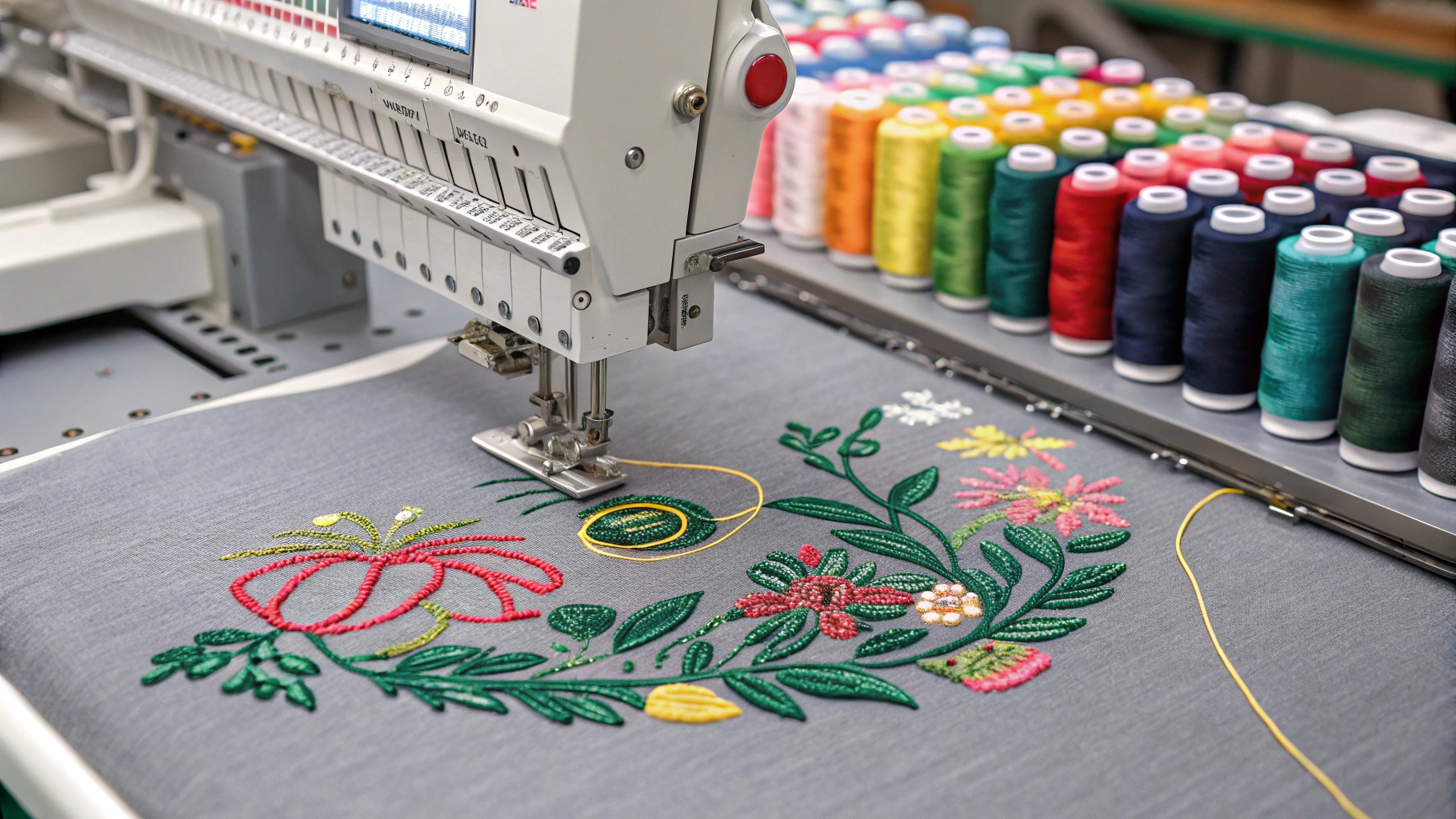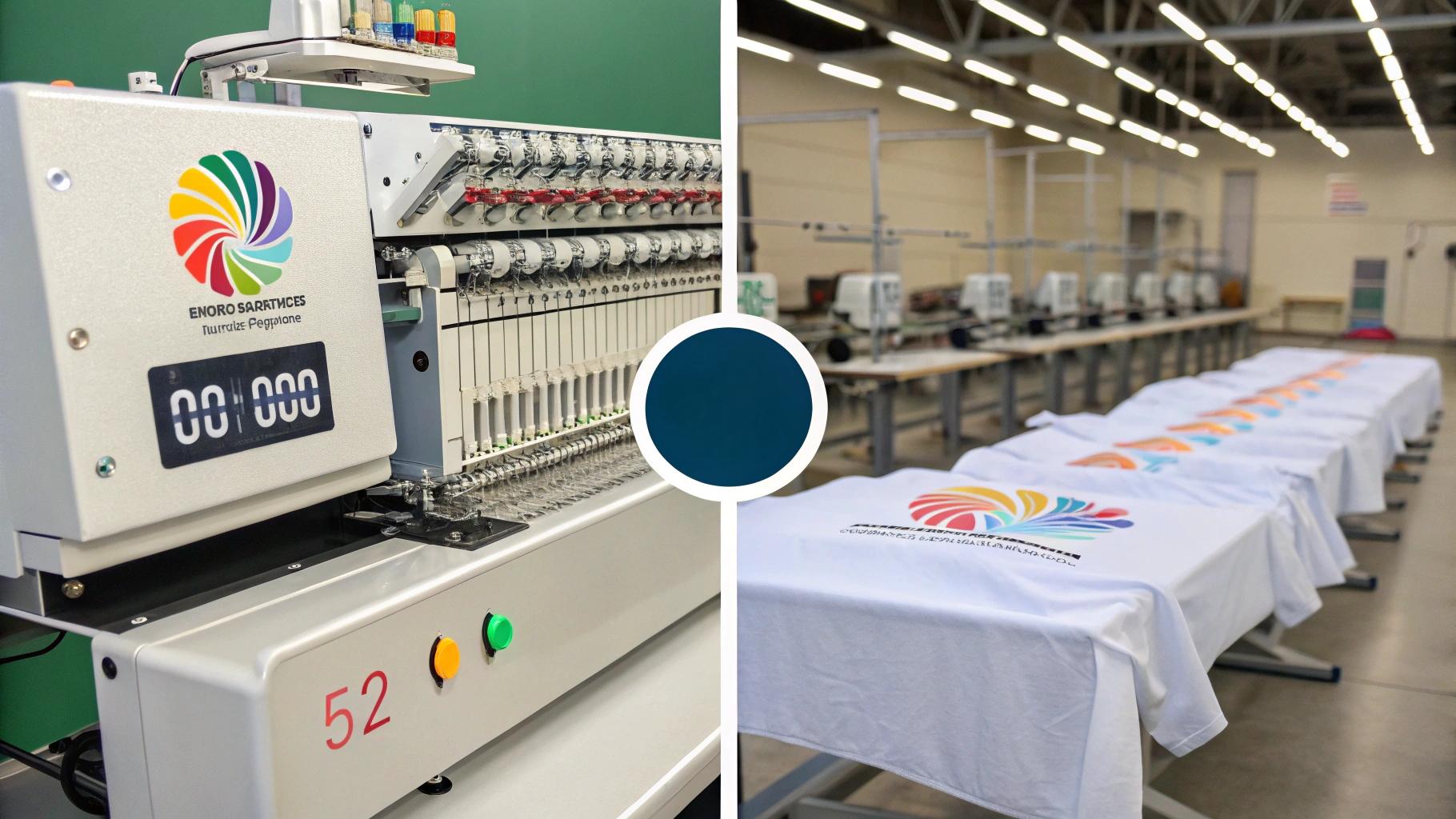Why Are Embroidered T-Shirts So Expensive?
Table of Contents
- What craftsmanship goes into embroidered T-shirts?
- Are embroidery materials more expensive than prints?
- Does embroidery take more production time?
- Why do brands choose embroidery despite the cost?
—
What craftsmanship goes into embroidered T-shirts?
Manual Skill or Machine Setup
Unlike straightforward screen printing, embroidery necessitates either skilled manual stitching or programming for embroidery machines—both processes requiring time and precision.
Design Digitization
Embroidery requires digitizing your artwork into stitch paths, which is a highly technical step that impacts thread density, angle, and final appearance.
Thread Count & Detail
Higher detail designs mean more stitches per inch, leading to longer production time and more thread usage.
| Craftsmanship Element | Embroidery | Screen Print |
|---|---|---|
| Design Preparation | Digitization Required | Vector Image |
| Execution Time | 5–20 mins per shirt | Quick transfer |
| Skill Level | Advanced (machine/hand) | Basic |

—
Are embroidery materials more expensive than prints?
Thread vs. Ink
Depending on the complexity, embroidery can take anywhere from 5 to 20 minutes per piece. In contrast, screen printing only takes seconds once the setup is complete.
Stabilizers and Backing
To prevent puckering and ensure durability, embroidered designs require stabilizers, which add to material costs and labor.
Machine Maintenance
Embroidery machines undergo higher wear due to thread tension and needle impact, increasing upkeep costs compared to printing presses.
| Material | Cost in Embroidery | Cost in Printing |
|---|---|---|
| Main Media | Thread ($0.10–$0.50/thread) | Ink ($0.01–$0.05/print) |
| Stabilizer | Required | Not Needed |
| Support Equipment | Special Hoops, Needles | Standard Screens |

—
Does embroidery take more production time?
Stitch Time Per Shirt
Depending on complexity, embroidery can take 5 to 20 minutes per piece. In comparison, screen printing takes seconds once the setup is complete.
Machine Setup and Switching
Embroidery requires changing threads for each color and adjusting tension, which delays production for multicolor logos.
Smaller Batch Limits
Because embroidery is slower and more costly, it’s not always suited for high-volume, low-margin T-shirt production.
| Production Factor | Embroidery | Screen Printing |
|---|---|---|
| Avg. Time per Tee | 10–15 min | 1–2 min |
| Color Setup | Thread Change Needed | Separate Screens |
| Batch Suitability | Small–Medium | Medium–Large |
At Bless Denim, we provide low-MOQ embroidery services ideal for personalized streetwear, corporate branding, and detail-driven designs.

—
Why do brands choose embroidery despite the cost?
Perceived Luxury
Embroidery feels premium—thanks to its 3D texture, thread sheen, and durability. It gives garments a more refined, professional look.
Durability Over Time
Unlike prints that may crack or fade, embroidery is resistant to washing and friction, making it suitable for uniforms, branded apparel, and high-end fashion.
Custom Branding Identity
Luxury brands and startups alike use embroidery to build visual identity with logos, slogans, or monograms that elevate product positioning[2].
| Brand Benefit | Embroidery Advantage | Impact |
|---|---|---|
| Visual Quality | Texture + Shine | Premium Appearance |
| Longevity | Doesn’t Crack or Peel | High Wear Resistance |
| Perceived Value | Luxury Impression | Higher Price Point |

—
Conclusion
Embroidered T-shirts command a higher price for a good reason. The blend of exquisite craftsmanship, elevated material costs, extended production times, and enduring brand value justifies the premium pricing.
At Bless Denim, we help brands, creators, and businesses produce embroidered T-shirts that stand out. From logo digitization to multi-thread production, we offer low MOQ and custom options tailored to your project. Get in touch to bring your embroidered vision to life.
—
References